The University of Osaka, the birthplace of “Yukawa theory”
Dr. Hideki Yukawa was engaged in the research in physics from 1933 to 1939, when he was a lecturer and assistant professor in the School of Science, The University of Osaka (formerly Osaka Imperial University). Yukawa’s meson theory was formulated in those years and came to fruition in the form of a paper titled “On the Interaction of Elementary Particles. I” (November 1934). In 1949, Yukawa became the first Japanese recipient of the Nobel Prize in recognition of his research achievements. As Japan was pretty desolate during the postwar period, this news brought excitement to people across the nation.
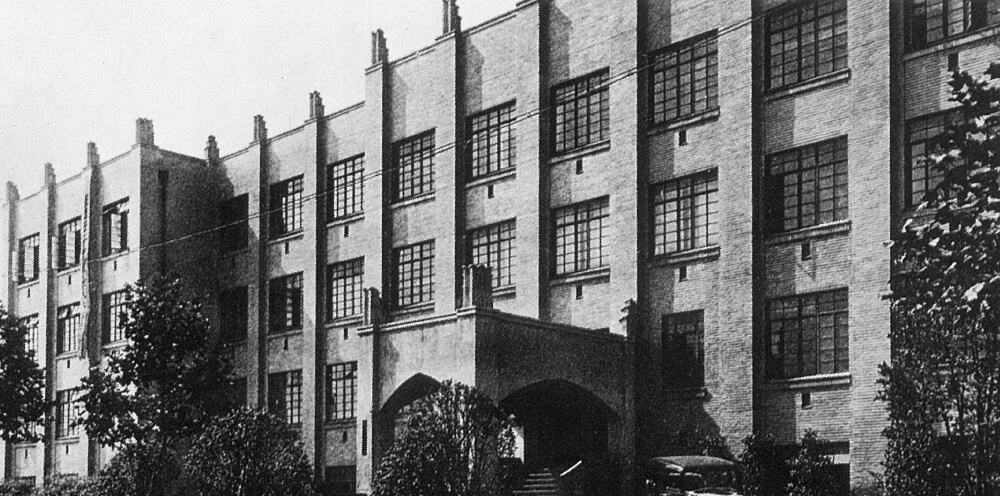
Unfettered and advanced research environment
The University of Osaka was established in 1931 in Nakanoshima, Osaka, with Dr. Hantaro Nagaoka as the first president. In 1933, Hidetsugu Yagi, who was then Dean of the Faculty of Science, Department of Physics, The University of Osaka, invited Hideki Yukawa at the age of 26 years as a lecturer. Yukawa worked on his research wholeheartedly in the working group headed by Seishi Kikuchi, a master of experimental nuclear physics.
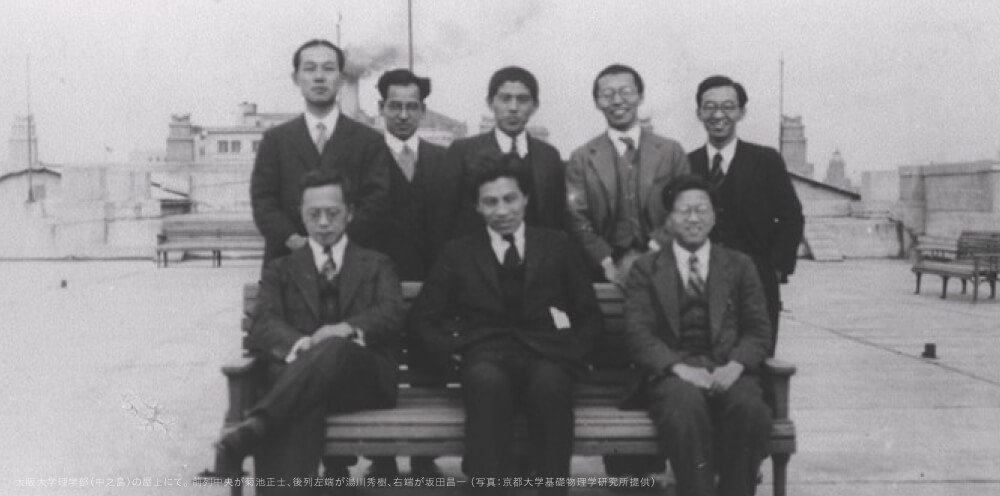
Days when young researchers gathered and competed energetically
Yukawa devoted himself to research activities. Many young researchers, including Shoichi Sakata, Koji Fushimi and Mitsuo Taketani, sought to study under Yukawa. Yukawa said in retrospect, “Being here makes me want to work more on research.” Yukawa energetically attended the study session held every day in the laboratory, presented lectures at the Department of Physics and academic meetings, and wrote many research papers during this period.
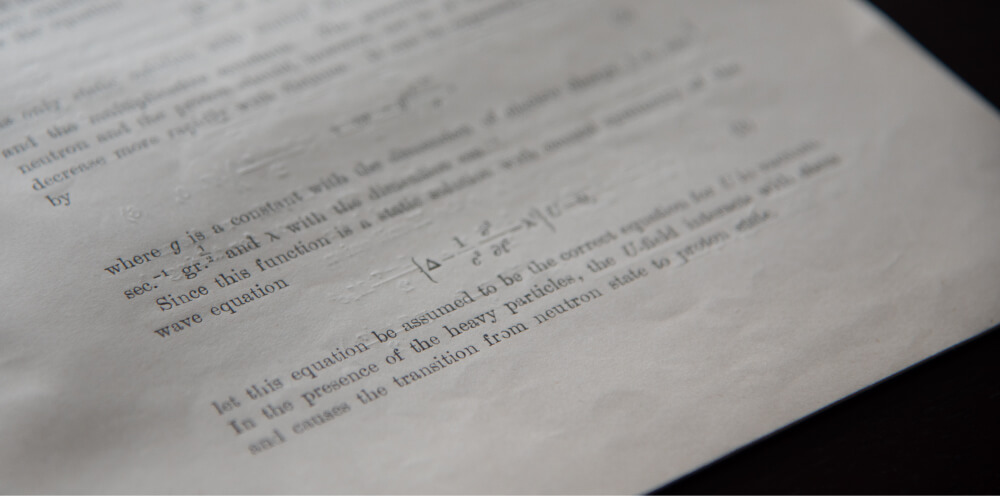
The inspiration that led to the meson theory
While he was busy discussing with his colleagues and practicing baseball, Yukawa suddenly came up with an idea. In his diary, Yukawa wrote “I talked about my thoughts on γ’ ray to Prof. Sakata” on October 10, 1934 and “I discussed about γ’ ray with Prof. Kikuchi and others” on October 11. Needless to say, “γ’ ray” refers to what is now known as a π meson.
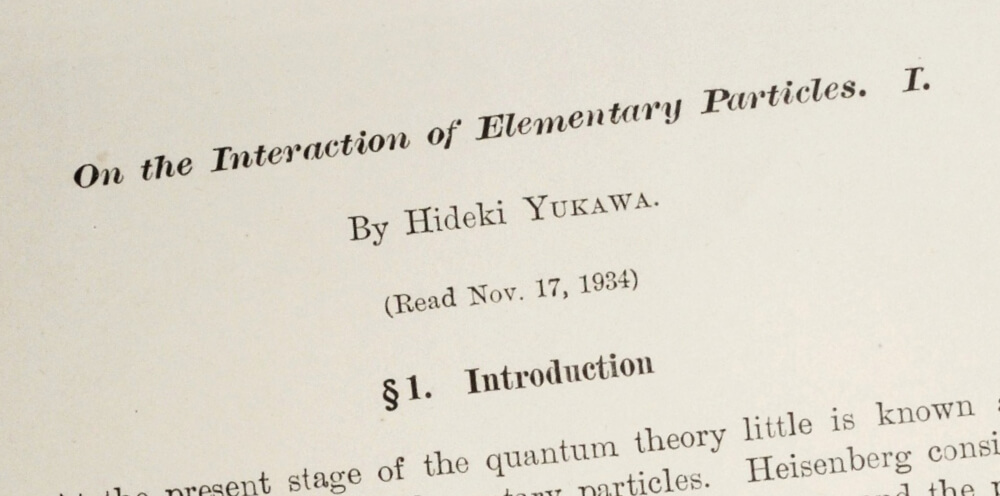
The dawn of elementary particle physics
Yukawa predicted the existence of new elementary particles (mesons) in order to explain nuclear forces, thus opening the door to modern particle physics at The University of Osaka.
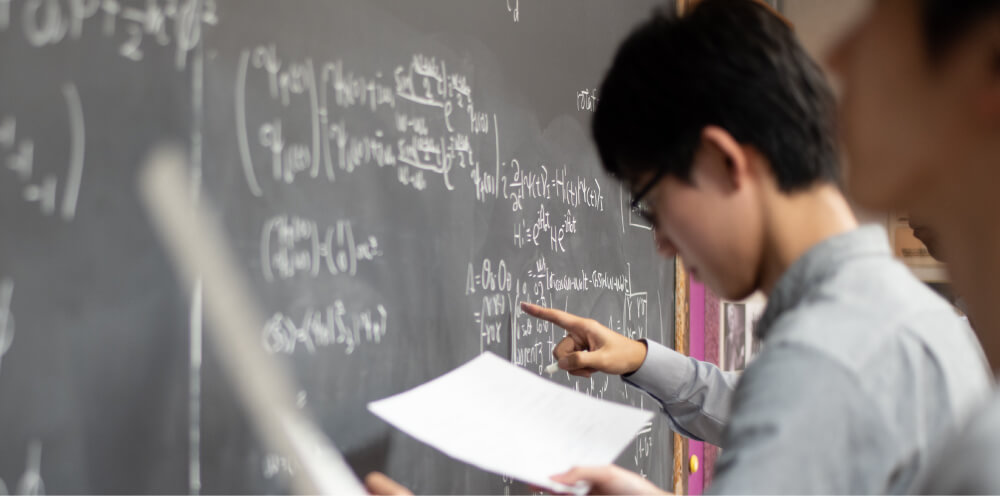
Yukawa’s favorite blackboard transported across the seas to Japan
In May 2014, the blackboard that Dr. Hideki Yukawa regularly used in his lab at Columbia University in the U.S. was transported to The University of Osaka Graduate School of Science. This blackboard is expected to spur deepening of discussions among students and young researchers, discoveries of new knowledge, and establishment of new domains of learning, as it did for Hideki Yukawa.
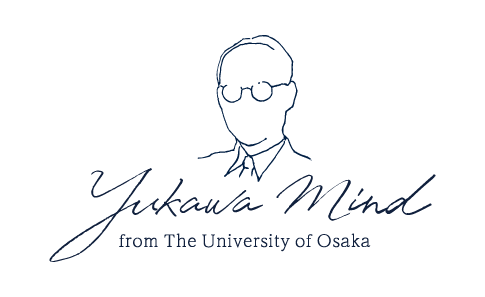
“Yukawa Mind” passed down from generation to generation
Hideki Yukawa’s creative research and his strong passion and commitment to seeking truth are inherited by The University of Osaka and passed down to the present and future generations.

